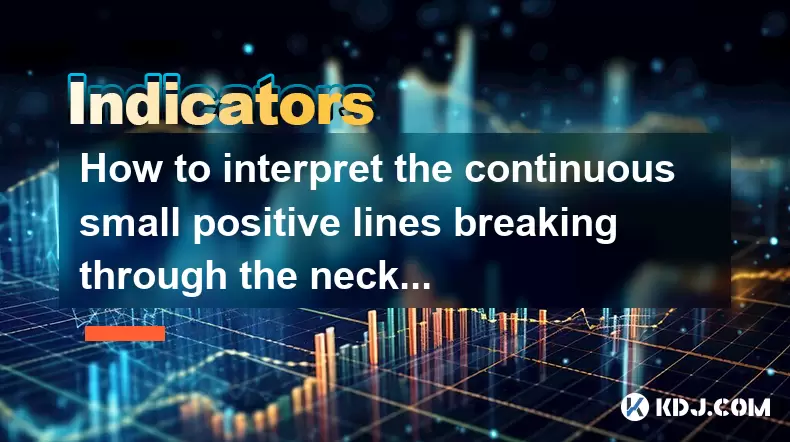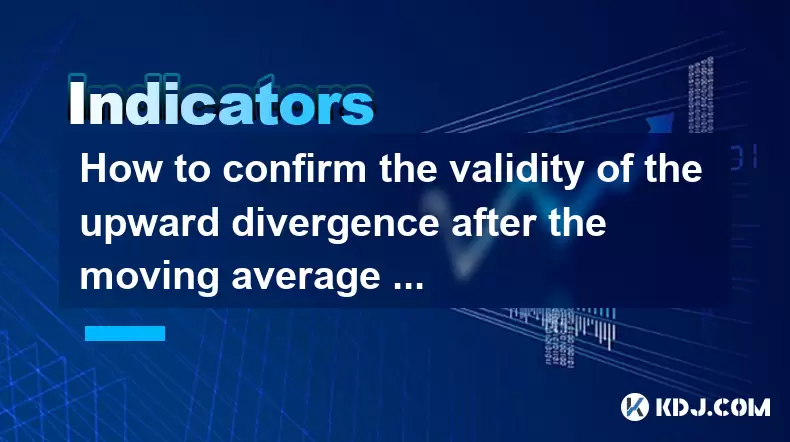-
 Bitcoin
Bitcoin $106,754.6083
1.33% -
 Ethereum
Ethereum $2,625.8249
3.80% -
 Tether USDt
Tether USDt $1.0001
-0.03% -
 XRP
XRP $2.1891
1.67% -
 BNB
BNB $654.5220
0.66% -
 Solana
Solana $156.9428
7.28% -
 USDC
USDC $0.9998
0.00% -
 Dogecoin
Dogecoin $0.1780
1.14% -
 TRON
TRON $0.2706
-0.16% -
 Cardano
Cardano $0.6470
2.77% -
 Hyperliquid
Hyperliquid $44.6467
10.24% -
 Sui
Sui $3.1128
3.86% -
 Bitcoin Cash
Bitcoin Cash $455.7646
3.00% -
 Chainlink
Chainlink $13.6858
4.08% -
 UNUS SED LEO
UNUS SED LEO $9.2682
0.21% -
 Avalanche
Avalanche $19.7433
3.79% -
 Stellar
Stellar $0.2616
1.64% -
 Toncoin
Toncoin $3.0222
2.19% -
 Shiba Inu
Shiba Inu $0.0...01220
1.49% -
 Hedera
Hedera $0.1580
2.75% -
 Litecoin
Litecoin $87.4964
2.29% -
 Polkadot
Polkadot $3.8958
3.05% -
 Ethena USDe
Ethena USDe $1.0000
-0.04% -
 Monero
Monero $317.2263
0.26% -
 Bitget Token
Bitget Token $4.5985
1.68% -
 Dai
Dai $0.9999
0.00% -
 Pepe
Pepe $0.0...01140
2.44% -
 Uniswap
Uniswap $7.6065
5.29% -
 Pi
Pi $0.6042
-2.00% -
 Aave
Aave $289.6343
6.02%
How to interpret the continuous small positive lines breaking through the neckline? W bottom pattern confirmation signal?
Continuous small positive lines breaking through the neckline confirm the W bottom pattern, signaling a bullish reversal in cryptocurrency trading.
May 30, 2025 at 10:50 pm

In the world of cryptocurrency trading, understanding chart patterns is crucial for making informed decisions. One such pattern that traders often look for is the W bottom pattern. This pattern can signal a potential reversal from a downtrend to an uptrend. A key aspect of confirming this pattern involves interpreting the continuous small positive lines that break through the neckline. Let's delve into the details of how to interpret these signals and confirm the W bottom pattern.
Understanding the W Bottom Pattern
The W bottom pattern is a bullish reversal pattern that forms after a downtrend. It gets its name from its shape, which resembles the letter "W". The pattern consists of two distinct lows at approximately the same level, with a peak in between. The confirmation of this pattern comes when the price breaks above the neckline, which is the highest point between the two lows.
Identifying the Neckline
The neckline is a critical component of the W bottom pattern. It is the resistance level that the price must break through to confirm the pattern. The neckline is drawn by connecting the highest point between the two lows of the W. For the pattern to be confirmed, the price must break above this neckline and close above it.
Continuous Small Positive Lines
When analyzing the W bottom pattern, traders often observe continuous small positive lines that break through the neckline. These lines represent small, incremental upward movements in the price of the cryptocurrency. They are significant because they indicate a sustained effort by buyers to push the price above the neckline.
Interpreting the Breakthrough
The breakthrough of the neckline by continuous small positive lines is a strong signal that the W bottom pattern is being confirmed. Here's how to interpret this signal:
- Sustained Effort: The continuous small positive lines show a sustained effort by buyers to push the price above the neckline. This indicates that the buying pressure is strong enough to overcome the resistance at the neckline.
- Volume Confirmation: It's important to look at the trading volume during these small positive lines. An increase in volume during the breakthrough can further confirm the pattern, as it shows that more traders are participating in the upward movement.
- Price Action: The price should not only break through the neckline but also close above it. Multiple small positive lines closing above the neckline reinforce the bullish signal.
Confirming the W Bottom Pattern
To confirm the W bottom pattern, traders should look for the following:
- Clear Breakthrough: The price must clearly break above the neckline. This is often indicated by a strong candlestick that closes well above the neckline.
- Retest and Hold: After breaking above the neckline, the price may retest the neckline from above. If the price holds above the neckline during this retest, it further confirms the pattern.
- Follow-Through: After the initial breakthrough and retest, the price should continue to move upwards. This follow-through is crucial for confirming that the reversal from a downtrend to an uptrend is indeed taking place.
Practical Example
Let's walk through a practical example of how to interpret continuous small positive lines breaking through the neckline in a W bottom pattern:
- Identify the Pattern: First, identify the W bottom pattern on the chart. Look for two lows at approximately the same level and a peak in between.
- Draw the Neckline: Draw a horizontal line at the highest point between the two lows. This is the neckline.
- Monitor Price Action: Observe the price as it approaches the neckline. Look for small positive lines that start to break through the neckline.
- Confirm the Breakthrough: If you see continuous small positive lines breaking through and closing above the neckline, this is a strong signal that the W bottom pattern is being confirmed.
- Check Volume: Ensure that the volume is increasing during these small positive lines. Higher volume supports the validity of the breakthrough.
- Watch for Retest: After the breakthrough, watch for a potential retest of the neckline from above. If the price holds above the neckline during the retest, it further confirms the pattern.
- Observe Follow-Through: Finally, observe the price movement after the breakthrough and retest. If the price continues to move upwards, it confirms the reversal to an uptrend.
Common Pitfalls to Avoid
When interpreting continuous small positive lines breaking through the neckline in a W bottom pattern, there are several common pitfalls to avoid:
- False Breakouts: Sometimes, the price may break through the neckline only to fall back below it. This is known as a false breakout. To avoid being misled by false breakouts, wait for a clear and sustained breakthrough.
- Ignoring Volume: Failing to consider the volume during the breakthrough can lead to misinterpretation of the pattern. Always check the volume to ensure it supports the bullish signal.
- Overlooking Retests: A retest of the neckline after the breakthrough is a common occurrence. Overlooking this retest can lead to premature conclusions about the pattern's confirmation.
Frequently Asked Questions
Q: Can the W bottom pattern be confirmed without continuous small positive lines breaking through the neckline?
A: While continuous small positive lines breaking through the neckline provide a strong confirmation signal, the W bottom pattern can still be confirmed with a single strong candlestick breaking above the neckline. However, the presence of continuous small positive lines adds more reliability to the confirmation.
Q: How important is the volume during the breakthrough of the neckline?
A: Volume is very important during the breakthrough of the neckline. An increase in volume indicates higher participation from traders and adds credibility to the bullish reversal signal. Without sufficient volume, the breakthrough might be less reliable.
Q: What should I do if the price breaks above the neckline but then falls back below it?
A: If the price breaks above the neckline but then falls back below it, it could be a false breakout. In such cases, wait for another attempt to break above the neckline. If the price successfully breaks through again and holds above the neckline, the W bottom pattern could still be confirmed.
Q: Is it necessary for the two lows in the W bottom pattern to be exactly at the same level?
A: No, the two lows do not need to be exactly at the same level. They should be at approximately the same level, with a small difference being acceptable. The key is that the neckline, drawn between the two lows, should be clear and distinct.
Disclaimer:info@kdj.com
The information provided is not trading advice. kdj.com does not assume any responsibility for any investments made based on the information provided in this article. Cryptocurrencies are highly volatile and it is highly recommended that you invest with caution after thorough research!
If you believe that the content used on this website infringes your copyright, please contact us immediately (info@kdj.com) and we will delete it promptly.
- Hack token plunges amidst hack SuSpicions: a Peckshield Alert
- 2025-06-21 10:25:11
- Gaming Tokens, Social Activity, and the Rise of APE & FLOKI: Who's Winning the Game?
- 2025-06-21 10:30:12
- England vs. India: A New Era Dawns in Test Cricket
- 2025-06-21 08:25:12
- Wyoming, Aptos, Sei: Pioneering the Future of Stablecoins
- 2025-06-21 08:45:12
- XRP Millionaire by 2040: A Realistic Dream?
- 2025-06-21 08:45:12
- JPMorgan, Shopify, and Ethereum Base: A New Era of On-Chain Finance
- 2025-06-21 09:05:12
Related knowledge

Does the sudden contraction of ATR indicate the end of the trend?
Jun 20,2025 at 11:14pm
Understanding ATR and Its Role in Technical AnalysisThe Average True Range (ATR) is a technical indicator used to measure market volatility. Developed by J. Welles Wilder, ATR calculates the average range of price movement over a specified period, typically 14 periods. It does not indicate direction—only volatility. Traders use ATR to gauge how much an ...

Is it invalid if the DMI crosses but the ADX does not expand?
Jun 21,2025 at 09:35am
Understanding the DMI and ADX RelationshipIn technical analysis, the Directional Movement Index (DMI) consists of two lines: +DI (Positive Directional Indicator) and -DI (Negative Directional Indicator). These indicators are used to determine the direction of a trend. When +DI crosses above -DI, it is often interpreted as a bullish signal, while the opp...

Is the trend continuation when the Williams indicator is oversold but there is no rebound?
Jun 20,2025 at 11:42pm
Understanding the Williams %R IndicatorThe Williams %R indicator, also known as the Williams Percent Range, is a momentum oscillator used in technical analysis to identify overbought and oversold levels in price movements. It typically ranges from 0 to -100, where values above -20 are considered overbought and values below -80 are considered oversold. T...

Is the golden cross of the ROC indicator below the zero axis effective?
Jun 20,2025 at 09:42pm
Understanding the ROC Indicator and Its Role in Cryptocurrency TradingThe Rate of Change (ROC) indicator is a momentum oscillator widely used by traders to assess the speed at which cryptocurrency prices are changing. It measures the percentage difference between the current price and the price from a certain number of periods ago. The ROC helps identif...

How to confirm the validity of the upward divergence after the moving average sticks together?
Jun 21,2025 at 01:36am
Understanding the Basics of Moving Averages and DivergenceIn technical analysis, moving averages are crucial tools used to smooth out price data over a specified time period. When multiple moving averages converge or 'stick together,' it often indicates a consolidation phase in the market. This phenomenon can be a precursor to significant price movement...

What should I do if the KD indicator crosses in the oversold zone but the rebound is weak?
Jun 21,2025 at 07:07am
Understanding the KD Indicator and Its Role in Crypto TradingThe KD indicator, also known as the stochastic oscillator, is a momentum-based technical analysis tool commonly used in cryptocurrency trading. It consists of two lines — the %K line and the %D line — that fluctuate between 0 and 100. The primary function of this indicator is to identify overb...

Does the sudden contraction of ATR indicate the end of the trend?
Jun 20,2025 at 11:14pm
Understanding ATR and Its Role in Technical AnalysisThe Average True Range (ATR) is a technical indicator used to measure market volatility. Developed by J. Welles Wilder, ATR calculates the average range of price movement over a specified period, typically 14 periods. It does not indicate direction—only volatility. Traders use ATR to gauge how much an ...

Is it invalid if the DMI crosses but the ADX does not expand?
Jun 21,2025 at 09:35am
Understanding the DMI and ADX RelationshipIn technical analysis, the Directional Movement Index (DMI) consists of two lines: +DI (Positive Directional Indicator) and -DI (Negative Directional Indicator). These indicators are used to determine the direction of a trend. When +DI crosses above -DI, it is often interpreted as a bullish signal, while the opp...

Is the trend continuation when the Williams indicator is oversold but there is no rebound?
Jun 20,2025 at 11:42pm
Understanding the Williams %R IndicatorThe Williams %R indicator, also known as the Williams Percent Range, is a momentum oscillator used in technical analysis to identify overbought and oversold levels in price movements. It typically ranges from 0 to -100, where values above -20 are considered overbought and values below -80 are considered oversold. T...

Is the golden cross of the ROC indicator below the zero axis effective?
Jun 20,2025 at 09:42pm
Understanding the ROC Indicator and Its Role in Cryptocurrency TradingThe Rate of Change (ROC) indicator is a momentum oscillator widely used by traders to assess the speed at which cryptocurrency prices are changing. It measures the percentage difference between the current price and the price from a certain number of periods ago. The ROC helps identif...

How to confirm the validity of the upward divergence after the moving average sticks together?
Jun 21,2025 at 01:36am
Understanding the Basics of Moving Averages and DivergenceIn technical analysis, moving averages are crucial tools used to smooth out price data over a specified time period. When multiple moving averages converge or 'stick together,' it often indicates a consolidation phase in the market. This phenomenon can be a precursor to significant price movement...

What should I do if the KD indicator crosses in the oversold zone but the rebound is weak?
Jun 21,2025 at 07:07am
Understanding the KD Indicator and Its Role in Crypto TradingThe KD indicator, also known as the stochastic oscillator, is a momentum-based technical analysis tool commonly used in cryptocurrency trading. It consists of two lines — the %K line and the %D line — that fluctuate between 0 and 100. The primary function of this indicator is to identify overb...
See all articles

























































































